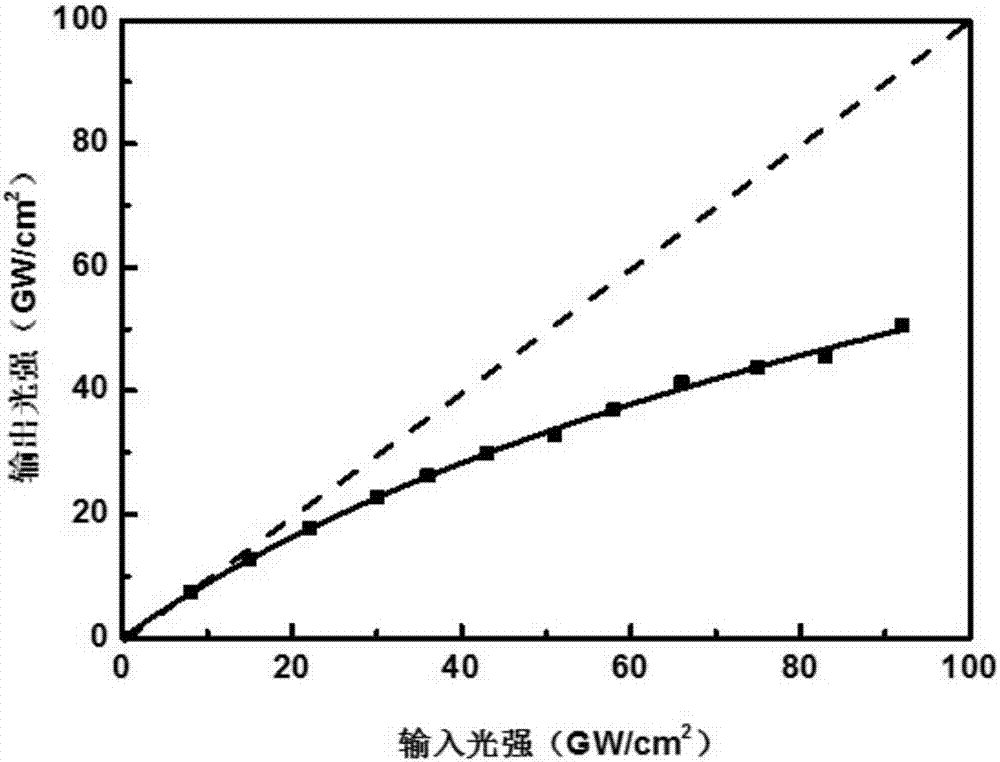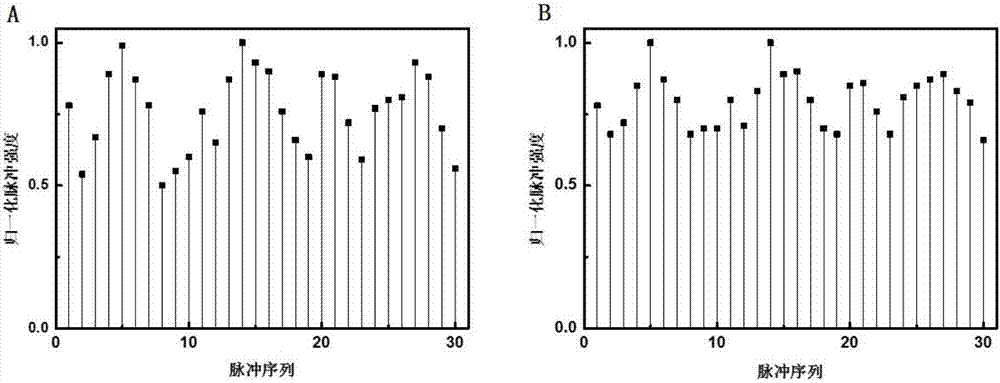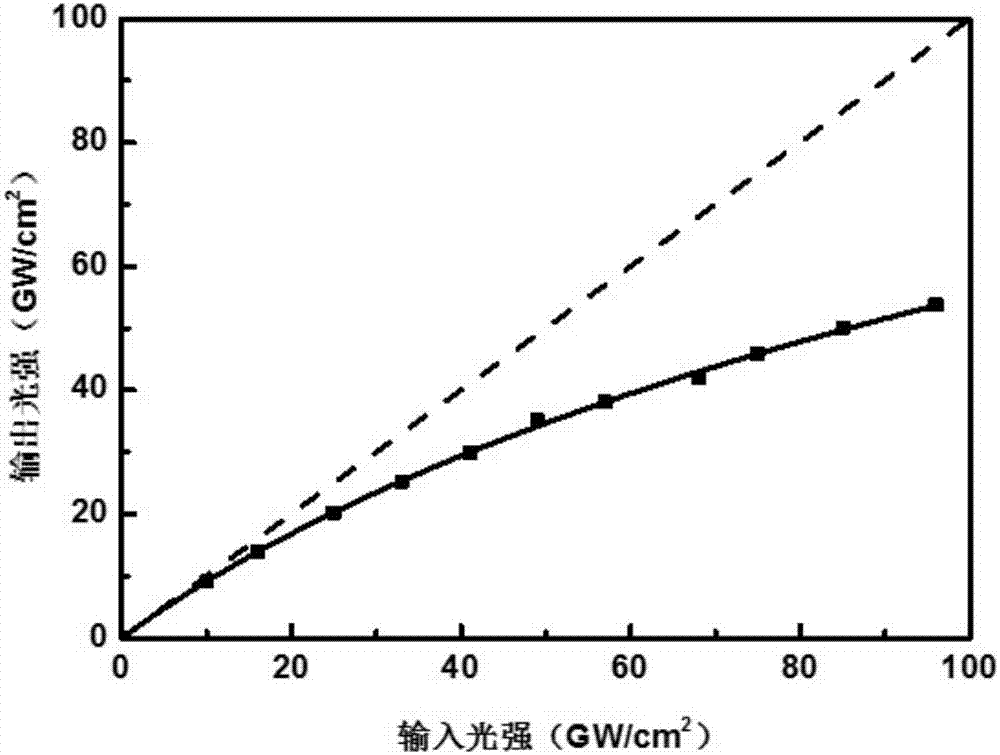Application of cyano-substituted stilbene type derivative of D-pi-A-pi-D structure as two-photon optical limiting material
A stilbene-based, cyano-substituted technology, applied in optics, nonlinear optics, instruments, etc., can solve the problems of less solid materials and unfavorable applications, achieve mild conditions, realize protection and protection, and have a large two-photon absorption cross section Effect
- Summary
- Abstract
- Description
- Claims
- Application Information
AI Technical Summary
Problems solved by technology
Method used
Image
Examples
Embodiment 1
[0077] Dissolve 27.3mg of the compound with the structure of formula P1-1 in 5ml of dimethylformamide to prepare a solution material with a concentration of 0.01mol / L. Take 3ml of the solution and inject it into a quartz cuvette with an optical path of 10mm. Tested in the laser light path, the material has a two-photon optical limiting effect in the range of 700-1100nm. By adjusting the concentration of the solution material, the optical limiting threshold can be adjusted at 10 7 ~10 9 W / cm 2 between. The material can be applied to control the output threshold and output quality of laser pulses in nanosecond, picosecond and femtosecond laser systems within the wavelength range. figure 1 Showing the relationship between the output light intensity and the input light intensity of the material made of the compound of the formula P1-1 structure in the femtosecond laser light path at a wavelength of 800nm, from figure 1 It can be seen from the figure that the experimental data (...
Embodiment 2
[0080] Dissolve 1.42mg of the compound with the structure of formula P1-2 in 15ml of methyl methacrylate, add 42.5mg of dibenzoyl peroxide sonicate until completely dissolved, and filter the mixed solution through a syringe filter with a pore size of 0.45 microns and inject it into the reactor , after passing nitrogen for 30 minutes, put the reactor into a water bath at 60°C for prepolymerization for 1 hour, so that the conversion rate of polymer monomers reaches 15-20%. After inflating, replace the air in the oven with nitrogen, and raise the temperature in the oven to 65°C and keep it for 24 hours to complete the curing of the sample. Finally, the temperature was raised to 120° C., and the sample was subjected to high-temperature heat treatment for 2 hours. After cooling, the sample was released from the mold to obtain a polymethyl methacrylate solid device with a dye doping concentration of 0.01 wt % and an optical path of 10 mm. The material has two-photon light limiting e...
Embodiment 3
[0083] Dissolve 0.23g of the compound with the formula P1-3 in 20ml of allyl diglycol dicarbonate, add 0.46g of diisopropyl peroxydicarbonate and ultrasonically dissolve it completely, and pass the mixed solution through a needle with a pore size of 0.45 microns Cartridge filter is filtered and injected into the mold, the sample is placed in a vacuum oven for 30 minutes under reduced pressure and degassed, then filled with nitrogen to replace the air in the oven, and the temperature in the oven is raised to 50°C to cure the sample according to the curing curve, the highest temperature is 80°C , curing polymerization time 20h. The specific curing curve is 50°C / 4h, 60°C / 6h, 70°C / 6h, and 80°C / 4h to complete the curing, and finally the temperature is raised to 110°C to quench for 2 hours, and the mold is released after cooling to obtain a dye doping concentration of 1.0wt%. Polyallyl diglycol dicarbonate solid device with a distance of 8 mm. The material has a two-photon optical ...
PUM
 Login to View More
Login to View More Abstract
Description
Claims
Application Information
 Login to View More
Login to View More - R&D
- Intellectual Property
- Life Sciences
- Materials
- Tech Scout
- Unparalleled Data Quality
- Higher Quality Content
- 60% Fewer Hallucinations
Browse by: Latest US Patents, China's latest patents, Technical Efficacy Thesaurus, Application Domain, Technology Topic, Popular Technical Reports.
© 2025 PatSnap. All rights reserved.Legal|Privacy policy|Modern Slavery Act Transparency Statement|Sitemap|About US| Contact US: help@patsnap.com



